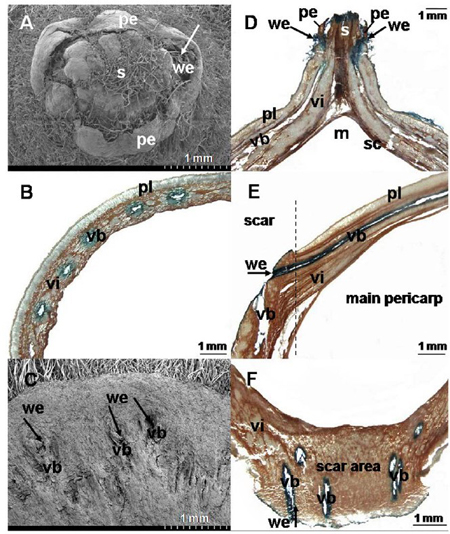Desiccation-sensitive recalcitrant seeds and fruits are killed by the loss of even moderate quantities of water. Consequently, minimizing the rate of water loss may be an important ecological factor and evolutionary driver by reducing the risk of mortality during post-dispersal dry-spells. For recalcitrant fruits of a range of Quercus species, prolonged drying times have been observed previously. However, the underlying mechanism(s) for this variation is unknown.
Recently, Using nine Quercus species, the Dr. XIA Ke and Prof. ZHOU Zhekun, from Kunming Institute of Botany, CAS, Dr. Matthew I. Daws, Dr. Wolfgang Stuppy and Dr. Hugh W. Pritchard, from Seed Conservation Department, Royal Botanic Gardens, Kew, United Kingdom, investigated the major route(s) of water flow into and out of the fruits and analysed the relative importance of the different pericarp components and their anatomy on water uptake/loss. During imbibition (rehydration), the surface area of the cupule scar and the frequency and area of the vascular bundles contained therein were significantly correlated with the rates of water uptake across the scar. The vascular bundles serving the apex of the fruit were a minor contributor to overall water uptake. Further, the rate of water uptake across the remainder of the pericarp surface was significantly correlated with the thickness of the vascularised inner layer in the pericarp. Fruits of Q. franchetii and Q. schottkyana dried most slowly and had a comparatively small scar surface area with few vascular bundles per unit area. These species inhabit drier regions than the other species studied, suggesting these anatomical features may have ecological value by reducing the risk of desiccation stress. However, this remains to be tested in the field.
This results have been online published in the international Journal PLoS ONE (http://www.plosone.org/article/info%3Adoi%2F10.1371%2Fjournal.pone.0047368).

The routes of water flow into fresh Q. fleuryi fruits when imbibed in water. (Image by KIB)

